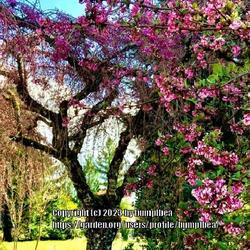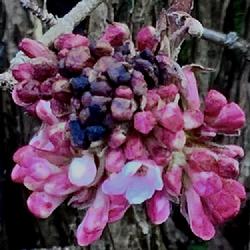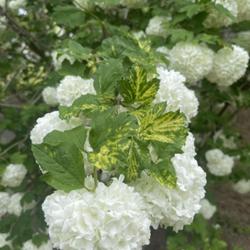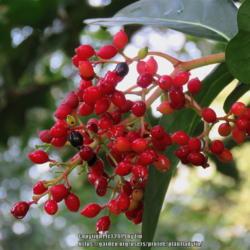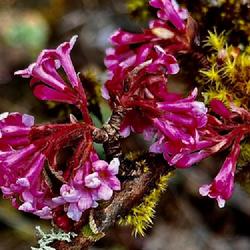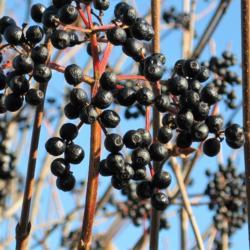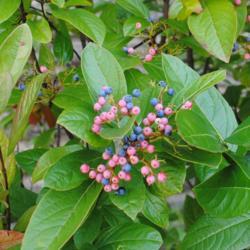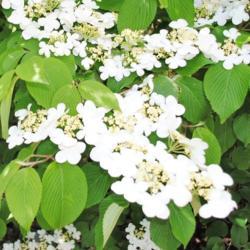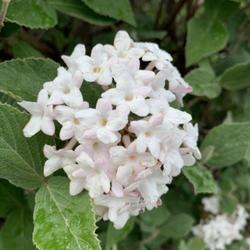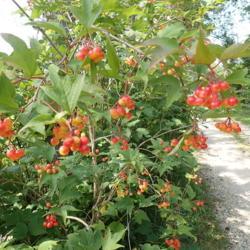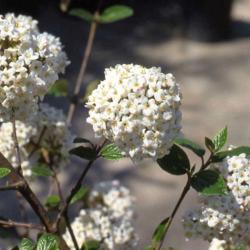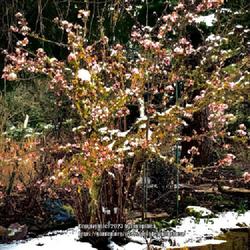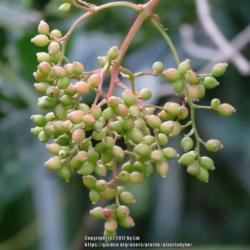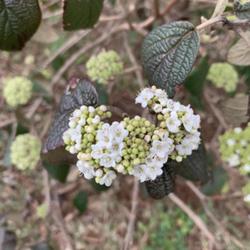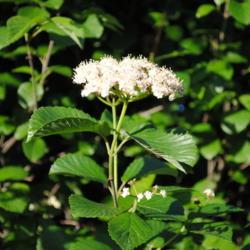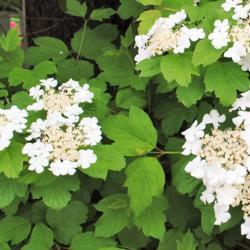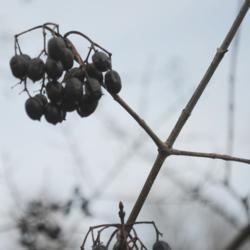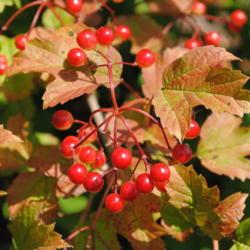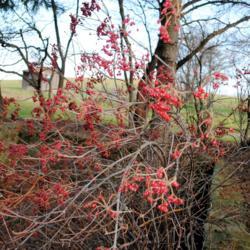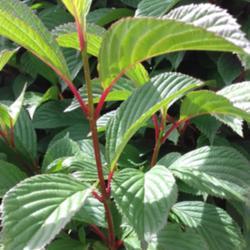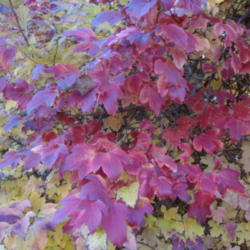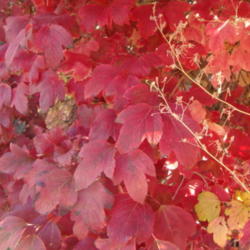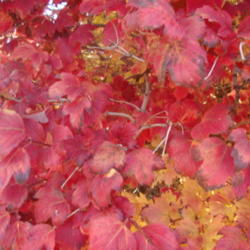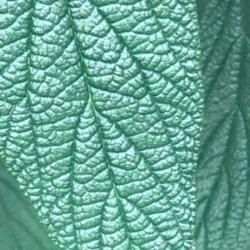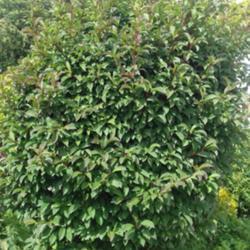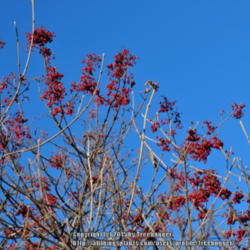"Viburnum is a genus of about 150–175 species of shrubs or (in a few species) small trees in the moschatel family, Adoxaceae. Its current classification is based on molecular phylogeny. It was previously included in the family Caprifoliaceae.
The leaves are opposite, simple, and entire, toothed or lobed; cool temperate species are deciduous, while most of the warm temperate species are evergreen. Some species are densely hairy on the shoots and leaves, with star-shaped hairs.
The flowers are produced in corymbs 5–15 cm across, each flower white to cream or pink, small, 3–5 mm across, with five petals, strongly fragrant in some species. The gynoecium has 3 connate carpels with the nectary on top of the gynoecium. Some species also have a fringe of large, showy sterile flowers round the perimeter of the corymb to act as a pollinator target.
The fruit is a spherical, oval or somewhat flattened drupe, red to purple, blue, or black, and containing a single seed; some are edible for humans (though many others are mildly poisonous to people). The leaves are sometimes eaten by the larvae of some Lepidoptera species.
Many species of viburnum have become popular as garden or landscape plants because of their showy flowers and berries, fragrance, and good autumn colour of some forms."
Taken from wikipedia's page at:
http://en.wikipedia.org/wiki/V...
